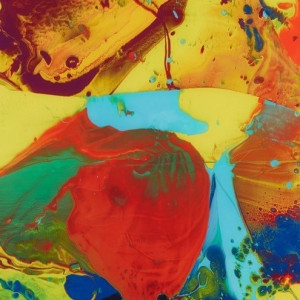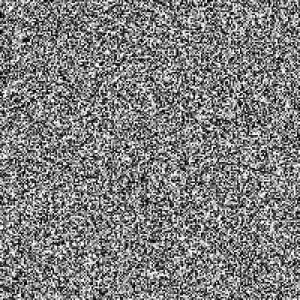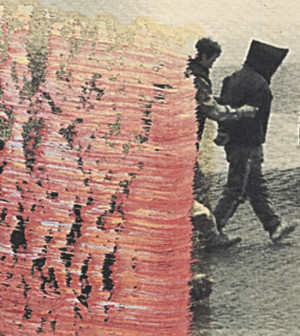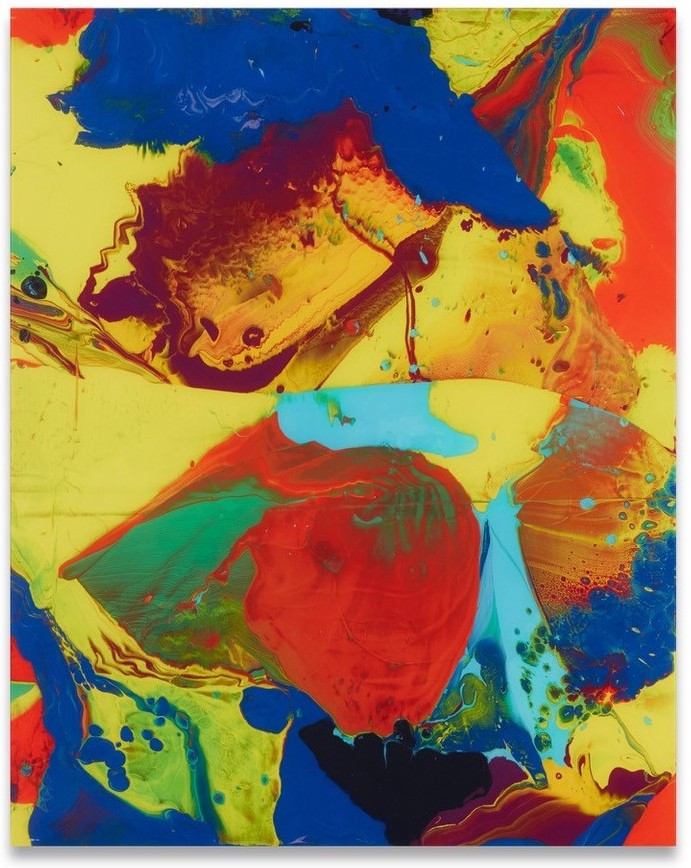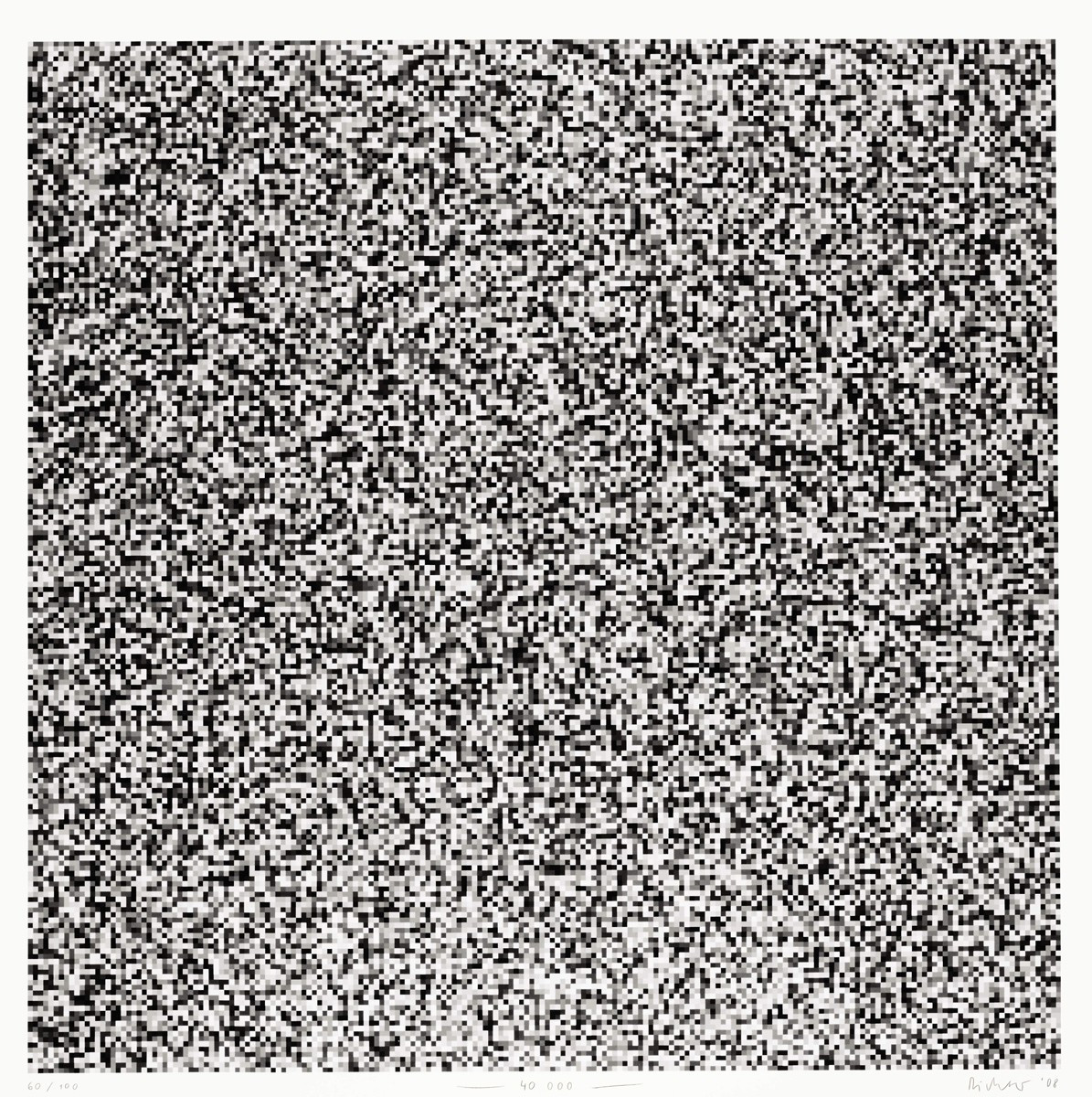Gerhard Richter
Gerhard Richter, born 1932 in Dresden, lives and works in Cologne. One of the most influential and versatile artists of the postwar era, he is known for his exploration of the boundaries between painting, photography, and abstraction. Richter’s career spans over six decades, during which he has continually reinvented his approach to image-making – his work ranges from blurred photorealistic paintings based on personal and found photographs to vibrant color charts and gestural abstractions. Central to his practice is a deep questioning of representation, memory, and the nature of visual truth. Through this shifting visual language, Richter challenges the viewer’s assumptions about reality, perception, and the role of art in contemporary life.
Gerhard Richter Editions
Bagdad (P10)
2014
Chromogenic print on aluminum (Diasec), 50 x 40 cm. Edition of 500, numbered, not signed.
Gerhard Richter’s edition Bagdad (P10) is a striking facsimile of his original painting from 2010 – an abstract work made by pouring vivid enamel paints onto a flat surface. The resulting composition captures the unpredictable interactions between pigments: some blend fluidly into one another, while others remain defiantly distinct, as seen in the deep blue form near the top. Once the paint had settled into a dynamic, almost psychedelic pattern, Richter imposed finality by pressing a pane of glass over the surface, freezing the movement and introducing a cool, detached sheen. The Diasec-mounted chromogenic print on aluminum echoes this sense of separation, transforming the original into an autonomous artwork that simultaneously reproduces and abstracts. In revisiting his painting through the lens of reproduction, Richter inverts the logic of his photo-based works, opening a new path toward abstraction that questions materiality, surface, and perception.
40.000
2008
Offset lithograph coated with clear varnish, 94 x 94 cm. Edition of 100, signed and numbered.
Gerhard Richter created this edition by minimizing compositional decision-making, reducing the work to a randomized presentation of a predefined color repertoire. The title 40.000 refers to the number of black, white, and grey squares that make up the image. Their arrangement was determined through a digital lottery system, operating within a set of predefined parameters. This generative process creates a striking aesthetic tension between chance and control, algorithmic structure and artistic intent – highlighting Richter’s enduring interest in the interplay between randomness, order, and the role of authorship in contemporary image-making.
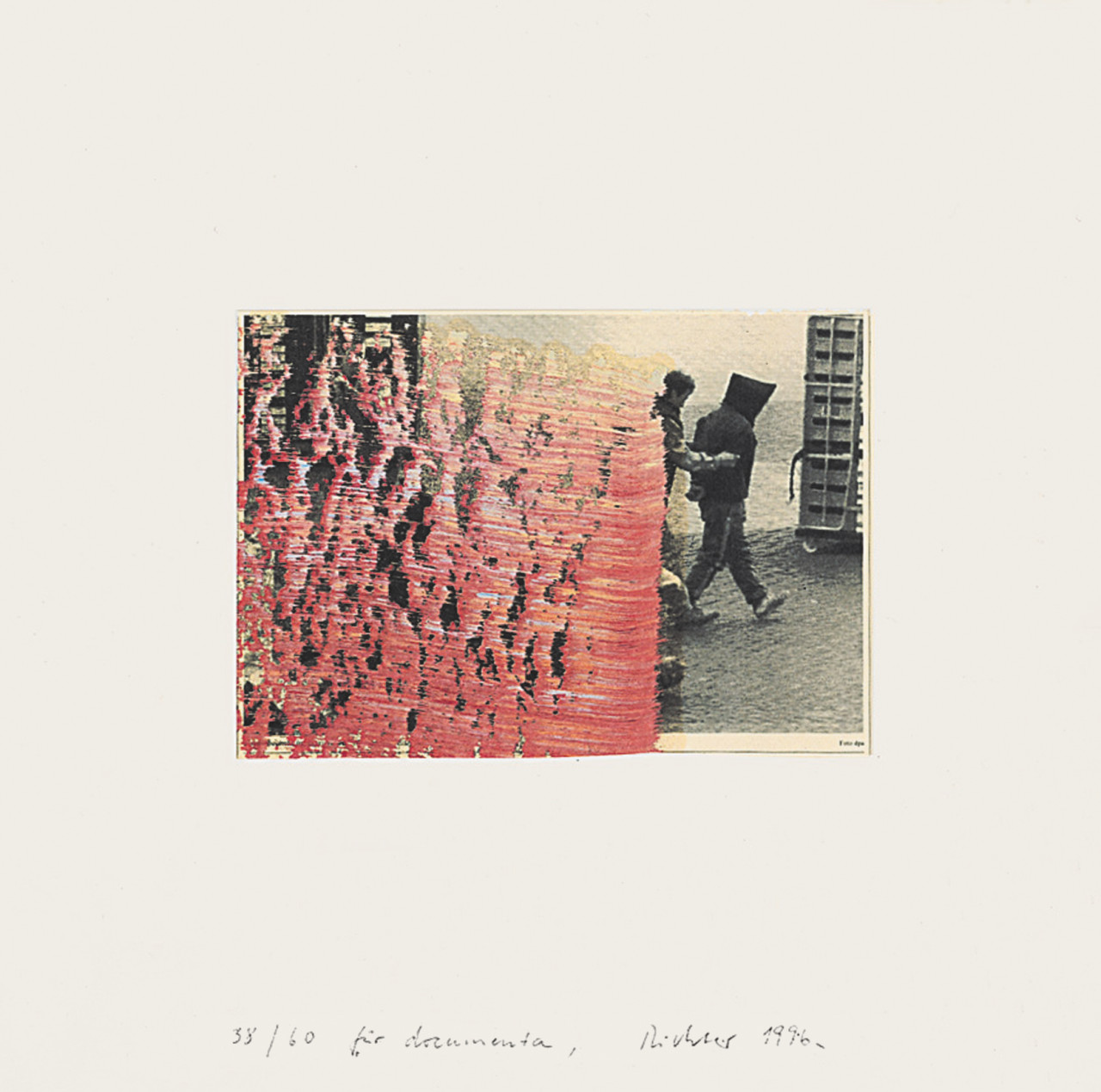
Hood
1996
Published for Documenta X
Offset print on handmade Japanese rag paper, 44 x 44 cm (17¼ x 17¼ in). Edition of 60, signed and numbered.
This edition is a compelling example of Gerhard Richter’s ongoing engagement with media imagery and the process of transformation through painting. Based on a photograph originally published in the Frankfurter Allgemeine Zeitung – itself sourced from the German Press Agency, dpa – the image shows two figures, one hooded, in a stark, documentary-style scene. Richter intervened in this image by overpainting the newspaper reproduction with gestural strokes of red and black oil paint, partially obscuring and abstracting the scene. He then photographed the altered image and reproduced this as an offset print, thereby layering several modes of mediation: press photography, newspaper print, painting, and mechanical reproduction. This process distances the viewer from the original event and highlights Richter’s preoccupation with how images are circulated, manipulated, and remembered. Hood reflects both political unease and aesthetic ambiguity, encapsulating Richter’s fascination with the fragile boundary between documentation and abstraction.
